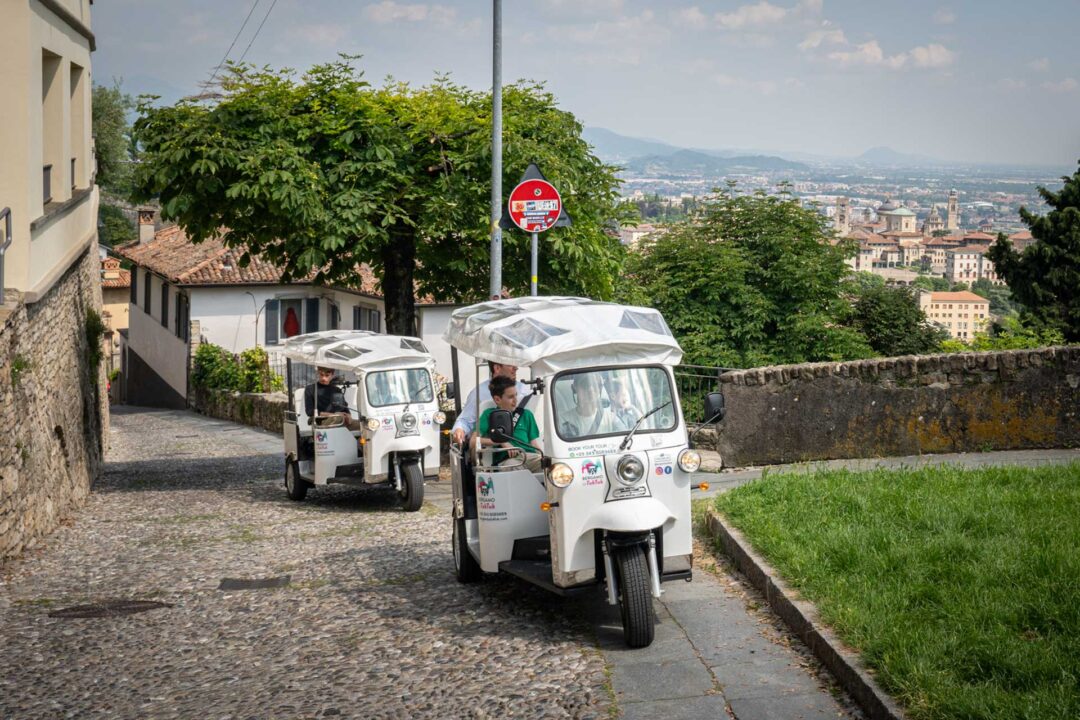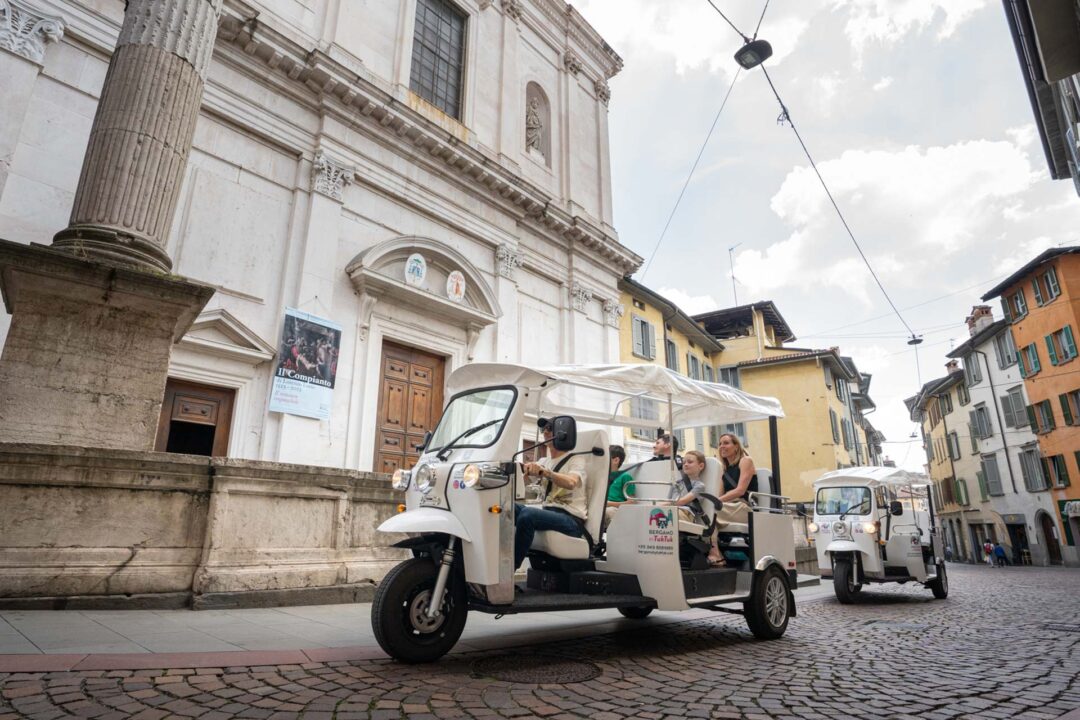

Colle Aperto, Colle San Giovanni, Colle S. Salvatore, Colle Rosate, Colle Gromo, Colle S. Eufemia, Colle S. Michele del Pozzo – these are the seven hills of Bergamo, embracing the Upper Town. Bergamo, in fact, was built on these seven hills, like other cities such as Rome and Cagliari. Nowadays it is really difficult to recognise these hills, as the construction of buildings, houses and palaces has completely changed the panorama of the Upper Town of Bergamo. Certain details, however, make some traces of the hills still visible, such as the bell tower of San Salvatore, or the Fortress that stands on top of the hill of Sant’Eufemia. These elevated places were also exploited for the construction of the Venetian Walls.
Colle di Gromo
Another important hill is Colle di Gromo. Its peculiarity is that it has kept its terrain intact. Even today, you can walk on its surface that has remained unchanged over the years. Colle di Gromo crosses Via Donizetti and Via Lupo, where the Gromo Sisters’ residence is located. It is one of the hills that can tell a lot of the history of the city of Bergamo, and it is also the place where some magnificent buildings stand today. And on Colle di Gromo, in 1236, the currency was made: here stood the Mint of Bergamo.
Colle di San Salvatore
Colle di San Salvatore is another important location where the first seat of the Bishopric of Bergamo was established, with the annexed churches of San Biagio, Santa Croce and the Curia offices. The hill was later used as a Student House, and it became private only later. The church of San Salvatore, better known as the Church of the Desperate, was also built here, as many people in need of shelter and those who relied on the church in times of trouble were welcomed and accepted here.
Colle Aperto
Those who want to visit and discover the Upper Town of Bergamo begin their journey from Colle Aperto, where you can enjoy a fantastic view of the Lower Town. It is not an actual hill, but a characteristic district within the upper part of the city. This area takes its name from the ancient denomination of the road that runs through it, which once led to the open part of the city walls (‘Aperto’ means ‘open’ in Italian).
Colle Aperto is famous for its historic atmosphere and charm, with cobbled streets, old buildings, restaurants, shops and cafés. It offers splendid panoramic views of the city and of its surroundings. It is one of the most picturesque and charming areas of Bergamo, popular with locals and visitors.
Colle di Rosate
The Colle di Rosate can also be seen from the Lower Town of Bergamo, because on its summit there is the impressive structure of the Liceo Sarpi, one of Bergamo’s most prestigious educational institutions and a former monastery of nuns. The complex was designed by Crivelli and erected in 1846 on the same site where a 15th-century convent once stood. You can reach the hill either through Via San Lorenzino or from Borgo Sant’Alessandro. In Piazza Rosate, the Casa del Forno and the Tempietto di Santa Croce, which date back to the Middle Ages, are also worth a visit.
Colle di S. Eufemia
It is the most significant hill in Bergamo, due to its tactical position and the presence of the Rocca, a fortress that apparently dates back to the 14th century. The hill of S. Eufemia was the fulcrum of the city, a place of sacred and secular buildings. On top of the hill, you can see the Rocca, a place dear to the people of Bergamo and visible even from the Lower Town. There is also a small church dedicated to Saint Euphemia, which has very ancient roots dating back to the early Christian period. On the hill, there is also the Parco delle Rimembranze, a space dedicated to the Fallen of the First World War. From here, you can enjoy a breathtaking view of the Lower Town and see the mountain ranges and valleys of Bergamo. The ascent to the fortress is characterised by cobbled streets, narrow alleys and a very suggestive medieval atmosphere.
Colle di San Michele al Pozzo Bianco
The church of San Michele al Pozzo Bianco, after which the hill itself is named, is located on top of this hill. The interior of the building houses the oldest crypt in the entire province and a collection of important artworks by Lorenzo Lotto. There are also remarkable artistic artefacts dating back to the period between the 13th and 16th century, as well as wall paintings by the Venetian painter. The name of the church originates from its ancient well (‘Pozzo Bianco’ means ‘white well’ in Italian), and its opening can still be seen on the square in front of it. Another significant historical element is the cannon house of San Giovanni, which contributes to the distinctive appearance of the area.
Colle di San Giovanni
The Episcopal Seminary, the Solza and Albani noble buildings, the Viscontea fortress and several medieval houses stand on Colle di San Giovanni. From this place, it is possible to observe the cannon house of San Giovanni, accessible via a metal staircase. This is a military building, consisting of two vaulted rooms and built for defensive purposes in order to protect the city. You can see the openings in the walls from which firearms and weapons used to shoot. Nowadays the entire complex is accessible to the public.





